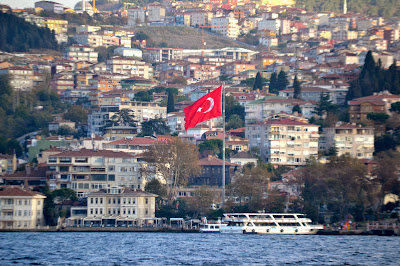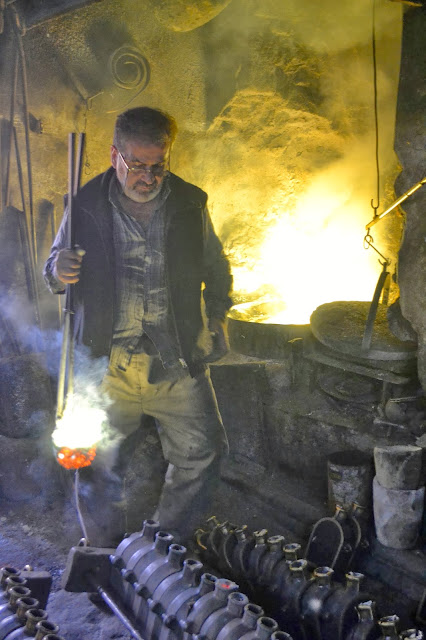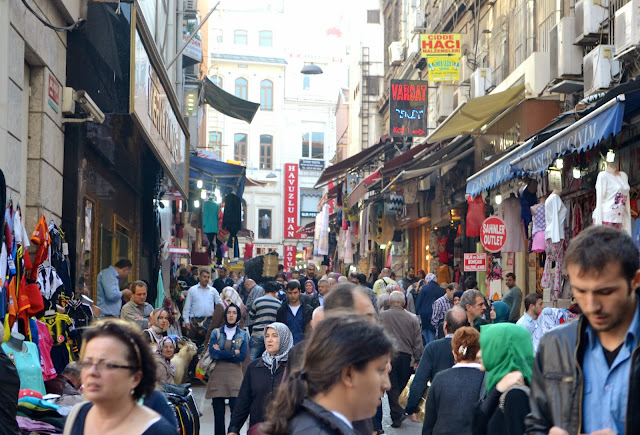After the Blue Mosque and Haghia Sophia, the Grand Bazaar and Spice Market are big tourist attractions in Istanbul. The Grand Bazaar is one of the largest and oldest covered markets in the world. It has 60 streets and 5,000 shops! You can find jewelry, hand-painted ceramics, carpets, embroideries, spices and antique shops. It's been an important trading center since 1461.
The Spice Bazaar was built with revenues from Egypt so it is sometimes called the Egyptian Bazaar. It was completed in 1660 by the architect Mustafa.
Tom and I walked around the Grand Bazaar and the Spice Market on our second day in Istanbul. Outside both markets are narrow streets bustling with people and more stores of any kind of merchandise you could want. Your senses are on overload walking through these areas. Many local people were doing their everyday shopping and it was easy to get lost on the winding, twisting old alleys.
We went to the Spice Market first and this is what we walked through to get to the Grand Bazaar.
 |
| one street of The Grand Bazaar |
 |
| Grand Bazaar |
 |
rug shop in the Grand Bazaar
|
We preferred the much smaller Spice Bazaar. It was much easier to navigate and not get lost. Shop keepers in all of the bazaars stand outside their store waiting for customers. I found the Spice Market shop keepers to be much less aggressive and it was fun to walk into their shops and bargain for some souvenirs.
 |
| Turkish Delights |
Turkish Delights (or Lokum) are the sweet treat of Istanbul! They are made of a gel of starch and sugar and good varieties have chopped dates, pistachios and hazelnuts or walnuts bound by the gel. They are packaged and eaten in small cubes dusted with icing sugar. They were invented in 1776 so they've been around awhile.
Spices and teas were displayed everywhere.
Shops full of beautifully hand painted ceramic bowls, plates, cups and trivets.

I didn't see many people buying these outfits but I guess they're popular also!

Outside the market, on the streets, were more merchants selling scarves and miscellaneous products.

On our way home, we passed a shop exclusively selling baklava. There were so many kinds, I had a hard time choosing which kind to buy. I did, however, decide to buy a few different kinds, all of which were delicious.

I'm not sure I've ever tasted pomegranate juice, but I loved it and enjoyed drinking it as soon as it was made. It was so fresh and no preservatives!
Now I know how far Babylon and Tehran are from Istanbul. It was another incredible day discovering the treasures that this city has to offer. Every day, Istanbul becomes more exciting and interesting. Why is the distance to Babylon in Roman Numerals and miles?



























































